
UBC Okanagan’s Dr. Madden Brewster is leading a two-year research project examining wildland firefighters' heart and lung health.
Forest fires fill the air with a choking mix of smoke, ash and dust, making every breath feel like a battle.
Still, wildland firefighters enter the fray to protect our communities from flames. It shouldn’t cost them their health.
That’s why UBC Okanagan’s Dr. Madden Brewster studies what’s in their air and what happens to wildland firefighters’ health the longer they breathe it.
“It’s crucial that we understand the long-term health risks firefighters face so we can develop effective interventions to protect them,” she says. “Our work ensures they have the information and tools they need to stay safe and healthy on the fire lines.”
View this post on Instagram
Dr. Brewster is a postdoctoral researcher with the Centre for Heart, Lung and Vascular Health in the Faculty of Health and Social Development at UBC Okanagan.
She says taking up this challenge is personally rewarding given what wildland firefighters are willing to risk for others.
Wildfire dangers on display
Dr. Brewster grew up amid North Carolina’s rugged Appalachian Mountains before relocating to Colorado, where she earned a doctorate in biology.
A dedicated outdoors enthusiast, she saw how wildfires had scarred the landscape and the people.
“I made friends with firefighters who would return to Boulder in the off-season,” she says. “You could see how hard it was on them. You could see it in their faces.”

Dr. Madden Brewster.
She began examining wildfires after collaborating with UBC Okanagan’s Dr. Phil Ainslie during an unrelated high-altitude research project.
They remained in contact after Dr. Brewster completed her doctorate, which led to her joining Dr. Ainslie and Dr. Neil Eves at the Centre for Heart, Lung and Vascular Health.
“This research fits well with my interests and the opportunities at UBC Okanagan,” she says. “The university has been a great choice for me, and I feel lucky and happy to be here.”
Collaboration supports firefighters’ health
Over two wildfire seasons, Dr. Brewster and the BC Wildfire Service (BCWS) will monitor and collect data from 54 crew members, testing breath samples and surrounding air quality.
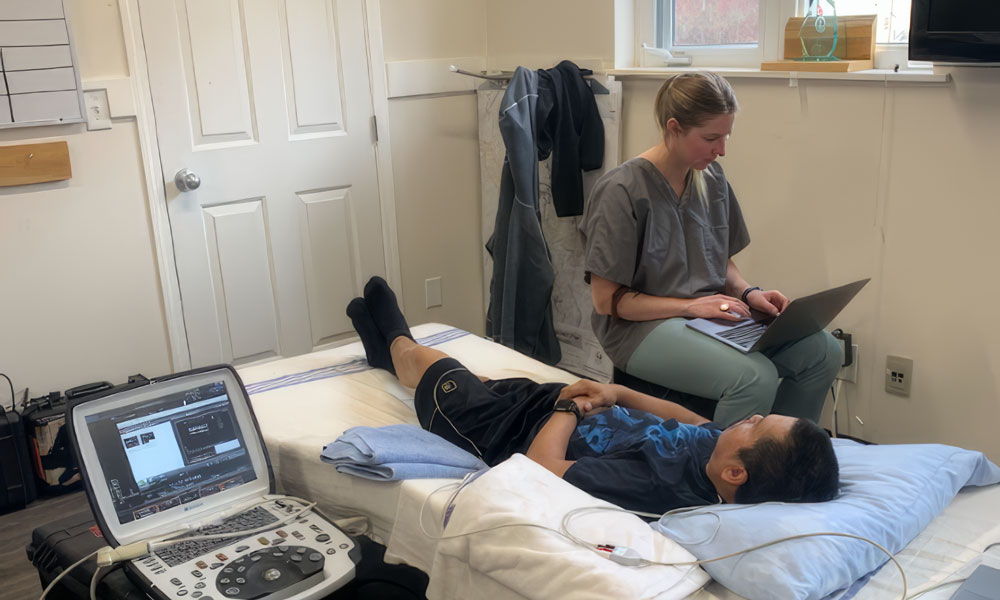
Monitoring comprises lung and vascular tests, including sensitive markers of respiratory function and ultrasound scans.
Throughout the project, they measure airborne silica and particulate matter so small that firefighters can inhale it deep into their respiratory tracts.
After two years, the researchers will have collected extensive data on the cardiorespiratory health of BCWS crew members. The data can help identify high-risk fire-line tasks and assess the long-term health consequences of wildfire smoke exposure.
The findings could help inform decisions about improved health and safety protocols for BCWS crews.
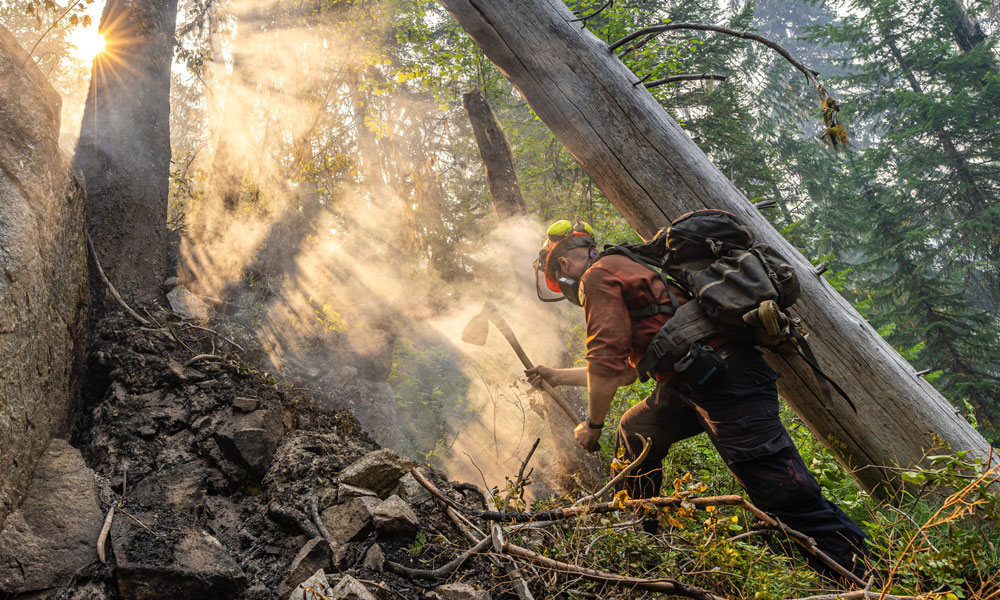
A firefighter works in dense smoke conditions, highlighting the challenging environments these crews face. Photo courtesy of BC Wildfire Service.
“A fair bit of research has already been done on what happens pre and post-shift as well as pre and post-season,” Dr. Brewster explains. “Our goal is to examine how those effects may accumulate.”
Part of the challenge comes from how to help firefighters working in stressful conditions.
Given the growing body of evidence, BCWS has made masks available to staff.
Previous research has shown that wearing a mask, such as an N95 mask or a respirator, reduces respiratory symptoms such as cough, runny nose or wheezing.
However, face coverings can limit vision or make breathing seem more difficult.
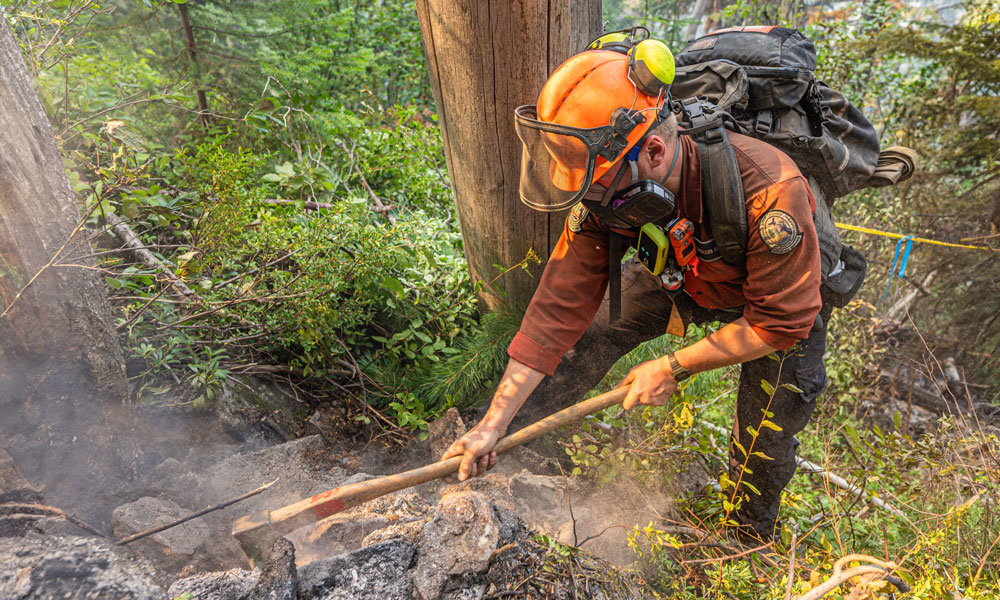
A firefighter wearing respiratory protection while working in a smoke-filled area, emphasizing the importance of safety measures. Photo courtesy of BC Wildfire Service.
“We’re definitely hoping to identify more effective interventions in the future,” Dr. Brewster says.
Drew Lichty is an occupational and environmental hygienist collaborating with BCWS and Dr. Brewster. He says it’s important to recognize that the BCWS has been conducting health-related fire-line research for nearly a decade.
“This information is invaluable, especially considering we will be able to compare it to the physiologic effects on the cardiorespiratory system that Dr. Brewster and her team are monitoring,” Lichty says.
“Better understanding how and to what extent exposure is occurring is a major step toward improving fire-line conditions.”

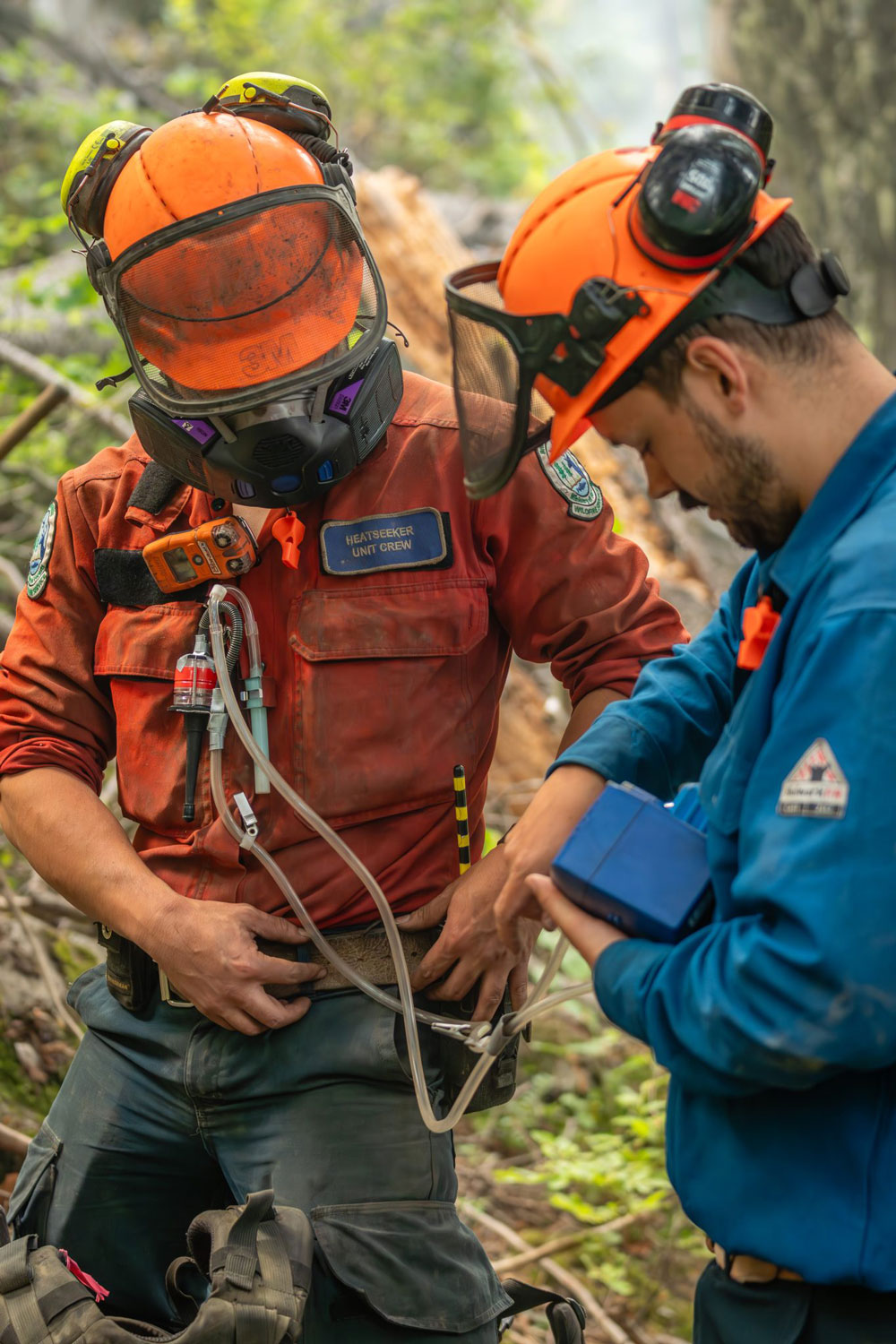

Dr. Brewster says the project is a “true knowledge translation” that ensures findings are practical and applicable.
“BCWS has been actively involved from the very beginning,” she says. “They’ve been full partners in the design and execution of the study, ensuring that the research is not only scientifically rigorous but also directly relevant to the specialized needs of wildland firefighters.”
New threats from wildfires
Lichty said UBC Okanagan’s interest and expertise are reassuring, especially as threats continue to emerge.
Early research into crystalline silica exposure has raised alarms, warranting further investigation. As firefighters dig and hike through wildfire zones, they can release this hazardous mineral from the ground, a threat that can be overshadowed by concerns about smoke exposure.
Understanding these risks and the dangers of smoke is crucial for developing better interventions.
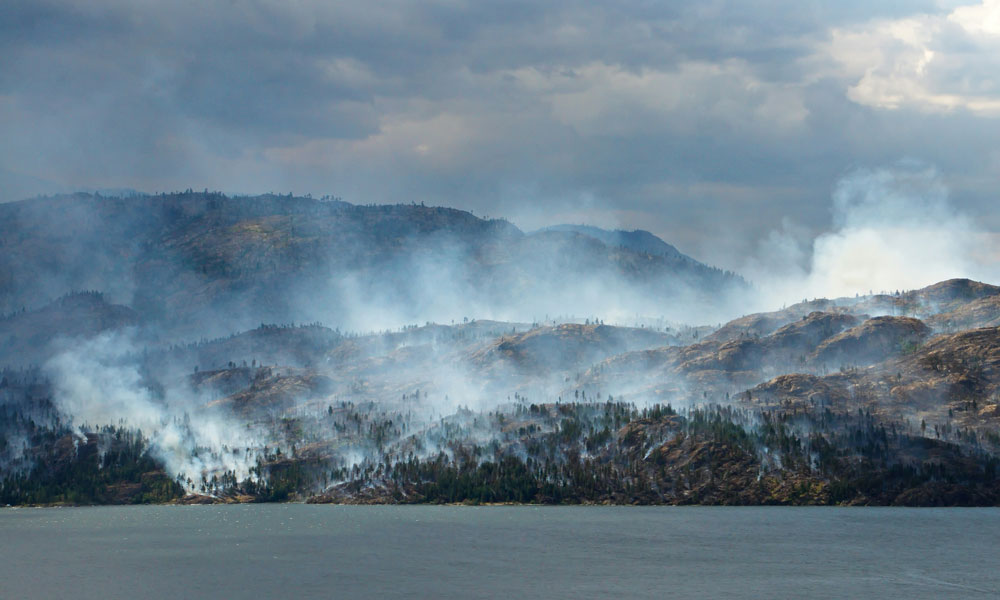
As can be seen from this photo of dense smoke conditions after a fire, crews face a number of challenges during and after a fire. Photo courtesy of BC Wildfire Service.
Dr. Brewster’s research can help identify high-risk tasks and conditions, informing improvements in firefighting techniques and strategies for crew rest and rotation to minimize health risks.
“We hope to continue this important health research by trialling and validating some of these recommendations,” Lichty says, “and we hope other researchers and organizations will do the same to better protect the health and wellness of wildland firefighters across the globe.”
Advancing firefighter health, safety
As climate change intensifies and wildfires become more frequent, Dr. Brewster’s research will be crucial in improving safety and health measures for those on the front lines.
UBC Okanagan’s commitment to new interdisciplinary approaches and experiential learning gives Dr. Brewster the flexibility and support needed to tackle these pressing issues.
“This work really focuses on important health concerns and highlights the kind of innovation and collaboration happening at UBC Okanagan,” she says.
“I’m grateful for the chance to do research that can genuinely make a difference. Being here has helped me grow as a researcher and explore new approaches to tackling these issues.”